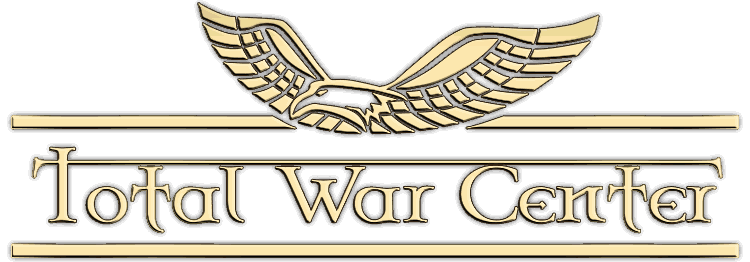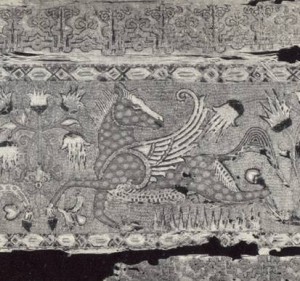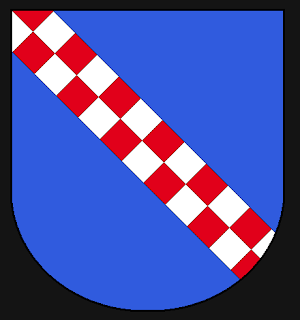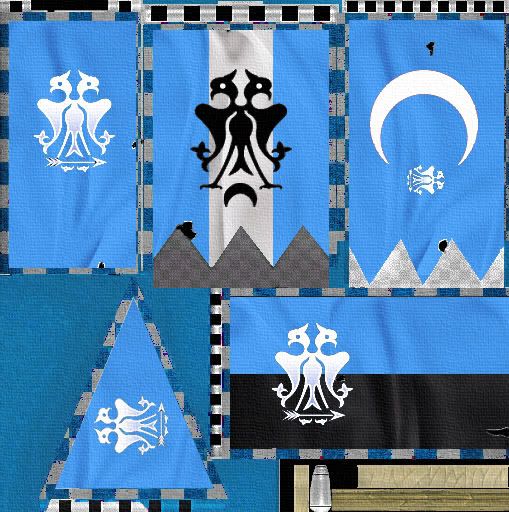So, as proposed in the General Discussion thread, here is a specific thread about accurate factions' icons and banners.
The purpose of this thread is to share historical sources in order to implement those in game. We do not want to borrow stuff from other mods or games.
To let us keep track on the information/proposals, please, try to keep things in order.
Specify if it concerns the icon or the battle field banners and in the latter, which unit type.
So I'm starting with the Fatimid Caliphate:
From a description of the New Year Ceremony in Cairo around the 10-11th century, I found that the white color was used by the Caliph for his clothes, parasol (mizalla) and turban (mandīl). It is then mentioned different kind of banners:
- The liwā’ay al-hamd (standards of praise) made of white silk embroidered in gold.
- Banners of embroidered silk on backgrounds of different colors, each with 3 inscribed bands (tirāz). These banners were kept by the caliph’s mounted escort (sibyān al-rikāb).
- Banners with a red or yellow brocade lion, attached on lances with crescents of solid gold (dhahab sāmita). The mouths of the lions were round disks, which the wind entered to puff up the figure. These banners were kept by the caliph’s elite guard (sibyān al-khāss).
Then there’s something about the wazir (vizier) banners but without much details. These banners were called bunūd made of embroidered dabīkī linen in various colors. I haven’t found more information.
Here is another source: http://www.twcenter.net/forums/showt...1#post12821381
It confirms the lion banners and the use of the green color as well.
Also it mentions that the tirāz were Koranic verse like this one: "Soon shall the hosts be routed, and they shall turn their backs." (54:45):
In addition, I've also found this from Wikipedia and about Nizari:
Below an Egyption banner from that period:The Fatimids adopted Green (akhdar) as the colour of their standard, which symbolized their allegiance to Hazrat Ali, who in order to thwart an assassination attempt once wrapped himself in a green coverlet in place of the Prophet Muhammad. When Hassan I Sabbah captured Alamut it is said he hoisted the green standard over the fortress, it was later reported that Hassan I Sabbah prophesied that when the Hidden Imam made himself known he would hoist a red flag, which Hasan II did during his appearance. Following the destruction of Alamut Isma'ili hoisted both green and red flags above the tombs of their Imams. Green and Red were unified in the 19th century into the Isma'ili flag known as "My Flag".
The Fatimids also used a white standard with gold inlays, and the Caliph Imams often wore white with gold, as they do today. Isma'ili use a gold crest on white standard to symbolize the authority of Imamate, and often wear white in the presence of their Imam.
The heptagram (septegram) a seven pointed star is often used by Isma'ili as a symbol.
It appears both Zengids and Fatimids as well as Ayyubids were quite familiar with lions. Saladin's the Lion of Allah is still famous not to mention Baybars' one (for Mamluk period).
I propose this for Fatimids main banners (big ones):
- A lion with embroideries in gold on a white background
- the Ali's lion in gold on green background for spearmen (something like the pic below):
Note: The lion (Persian: haidar) is a common symbol for the strength and greatness of ‘Ali, the fourth of the rightly guided caliphs and the first
imam of the Shia who plays an outstanding role in Sufi tradition and is praised as the “Lion of God.”
- a horse with wings, white and/or gold, on green background for cavalry:
Note: I know, it's a persian style symbol but it's actually an Egyptian one from the 12-13th century. From my point of view, probably at the end of the Fatimid dynasty or beginning of the Ayyubid one.
- a heptagram or octogram (7 or 8 branches star) and embroideries in gold on green background for archers
- the koran verse (54:45) in gold or red, on 3 straps flags, 2 green and 1 white in between (or the contrary) for infantry

























 Reply With Quote
Reply With Quote

















.gif)






















